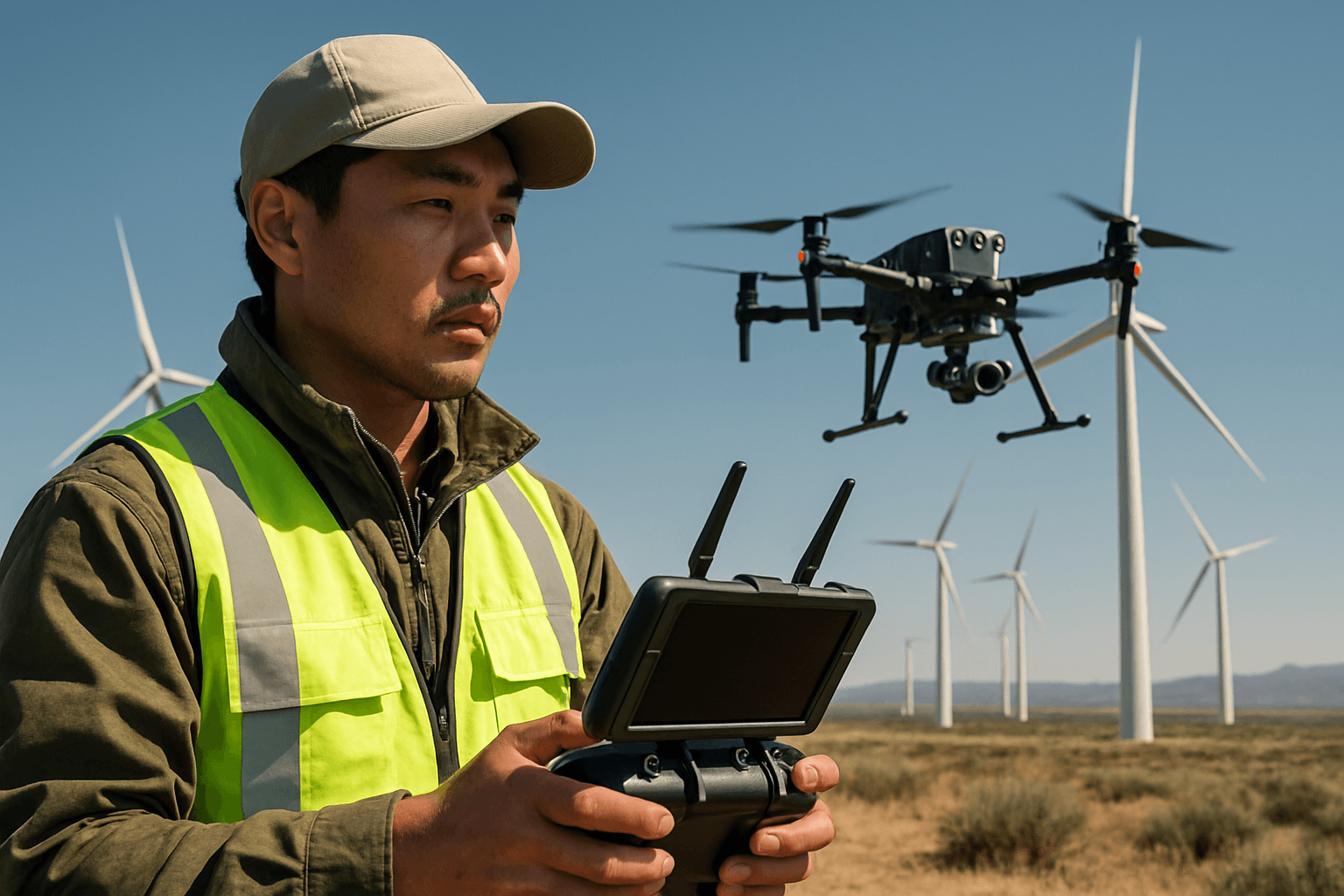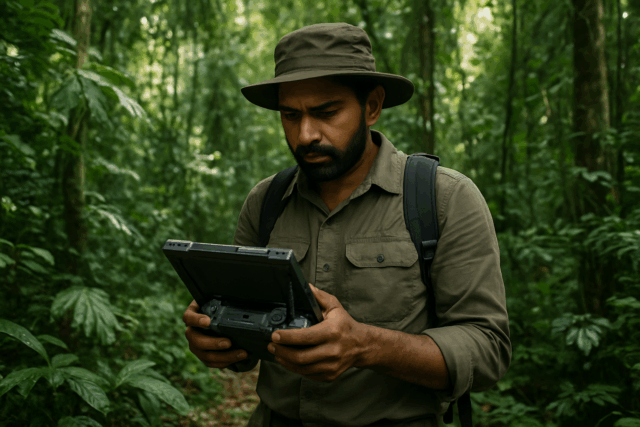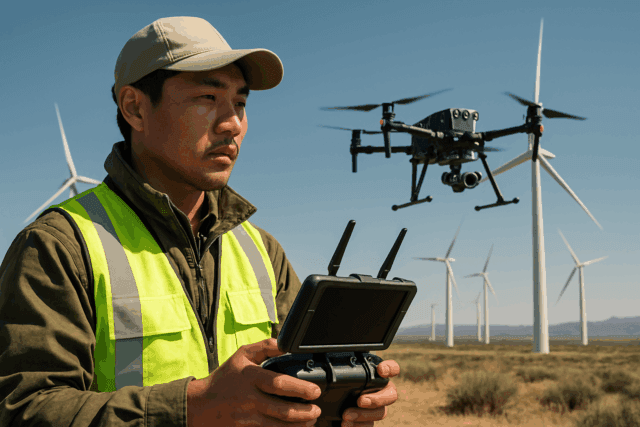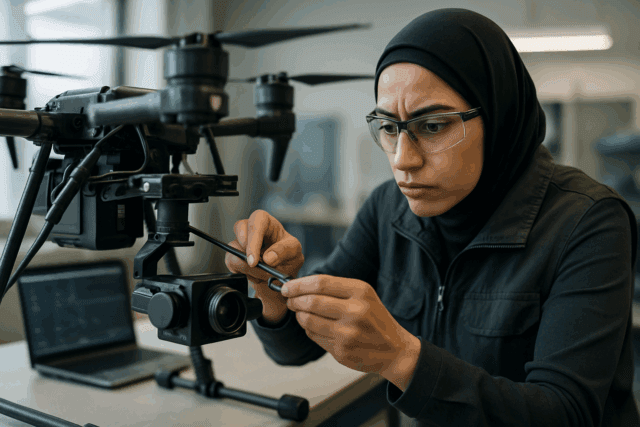Remote industrial sites, from sprawling oil and gas pipelines to towering wind farms and vast mining operations, have historically presented immense challenges for effective monitoring. The sheer scale, hazardous environments, and geographical isolation often lead to costly, risky, and time-consuming inspections. However, a technological revolution is underway, with Unmanned Aerial Vehicles (UAVs), commonly known as drones, transforming how these critical assets are managed, enhancing safety, streamlining operations, and bolstering security.
The Evolving Landscape of Remote Industrial Monitoring
Traditionally, monitoring remote industrial sites involved methods fraught with difficulties. Manual inspections required personnel to traverse dangerous terrain, climb structures, or use expensive manned aircraft, exposing them to significant risks such as falls and electric shocks. These methods were not only hazardous but also inefficient, often providing limited data, incurring high costs, and causing operational downtime. The emergence of drones has offered a compelling alternative, providing a safer, faster, and more cost-effective means to collect high-quality data and deliver real-time insights.
Key Benefits of Drone Deployment at Industrial Sites
The adoption of drones for industrial surveillance and security is driven by several significant advantages that directly address the limitations of conventional approaches.
Enhanced Safety and Risk Mitigation
One of the most profound benefits of using drones is the dramatic reduction in risk to human personnel. Drones can inspect high-risk areas like power lines, tall structures, and confined spaces, eliminating the need for workers to be physically present in hazardous environments. This capability not only protects workers from potential injuries but also reduces downtime associated with safety protocols. For example, drones can identify structural weaknesses, corrosion, or other hazards on high-voltage power lines and oil pipelines from a safe distance. In mining, drones inspect pit walls, tailings dams, and open stopes, reducing human exposure to dangerous areas.
Cost Efficiency and Operational Savings
Drones offer substantial cost savings compared to traditional inspection methods. Companies utilizing drones can see savings of 30-50% compared to manual inspections, by avoiding expensive equipment rentals like cranes and scaffolding, and reducing labor costs. For instance, inspecting a bridge with a drone might cost as little as $5,000, significantly less than a traditional $10,000 inspection. Drones also allow for more frequent inspections without increased costs or safety risks. This efficiency translates into preventing costly shutdowns and reducing maintenance expenses by detecting issues early.
Improved Data Accuracy and Collection Speed
Equipped with high-resolution cameras and various advanced sensors, drones capture precise aerial data that is difficult or impossible to obtain manually. They can cover vast, hard-to-reach areas efficiently, gathering data for maintenance, monitoring, and operations, all while saving time and resources. Drones can complete inspections up to 10 times faster than traditional methods. The data collected, often high-fidelity computer vision data, can be used to create digital twins for predictive maintenance and asset management.
Increased Accessibility to Difficult Terrains
Industrial sites often span challenging geographies, from mountainous regions to offshore platforms. Drones provide unparalleled access to these remote and often inaccessible areas. For offshore wind farms, where accessibility is a major concern, drones are invaluable for visual inspections of turbines and transmission lines, reducing the need for expensive and risky manned missions. Similarly, drones can inspect hydroelectric dams, spillways, pipelines, and reservoirs, performing regular monitoring without manual inspections.
Diverse Applications of Drones in Industrial Surveillance and Security
The versatility of drones has led to their widespread adoption across various critical industrial sectors for surveillance, inspection, and security. The global drone market for the energy sector alone is projected to reach $474.4 billion by 2030, with monitoring and maintenance being the fastest-growing application.
Infrastructure Inspection
Drones are extensively used for inspecting critical energy infrastructure, including power lines, transmission towers, pipelines, wind turbines, and solar panels.
- Power Lines and Utilities: Drones provide a safer and quicker method for inspecting power lines, detecting issues before they escalate. They can inspect 15-20 miles of power lines per day, significantly more than ground-based crews.
- Oil and Gas Pipelines: Drones can identify structural weaknesses, corrosion, or potential hazards on oil pipelines. They are also crucial for detecting gas and oil leaks using thermal cameras and Optical Gas Imaging (OGI) sensors, which can identify emissions that are invisible to the naked eye. Autonomous OGI drone systems have even received EPA approval as an Alternative Test Method for federal compliance for methane emission detection.
- Renewable Energy: Drones efficiently inspect solar farms, identifying defects, hotspots, or underperforming panels with thermal cameras. They also aid in the inspection of wind turbine blades and structures, facilitating regular maintenance and prolonging turbine lifespans without technicians having to climb.
Environmental Monitoring
Drones play a crucial role in environmental compliance and sustainability by monitoring ecological impacts.
- Emissions and Spills: They can be outfitted with sensors to measure thermal signatures and gas leaks, aiding in the detection of environmental hazards. For example, Shell has deployed thermal drones at over 500 sites to look for methane leaks.
- Wildlife and Vegetation: Drones are used to monitor the environmental impact of renewable energy projects, such as assessing wildlife habitats near wind farms or tracking vegetation changes around solar farms. They also help with vegetation management near power lines.
Perimeter Security and Intrusion Detection
For industrial sites, drones enhance security by providing real-time aerial surveillance, detecting and tracking intruders, and assessing potential threats. They offer a more agile and cost-effective solution compared to fixed camera networks or deploying extensive security personnel. Drone docking stations enable persistent and fully automated surveillance solutions, providing round-the-clock security.
Inventory Management and Asset Tracking
In industries like mining, drones perform aerial surveys and 3D mapping to create detailed topographic maps and assess stockpile volumes with high accuracy. This helps with site planning, progress tracking, and accurate inventory measurement and monitoring.
Emergency Response and Damage Assessment
Drones can be rapidly deployed for damage assessment after natural disasters or equipment failures, providing critical real-time data to effectively manage incidents and speed up repairs. They reduce the risk of exposing responders to hazardous environments and can locate survivors in difficult terrain using thermal imaging.
Technological Advancements Powering Industrial Drone Operations
The capabilities of industrial drones are continually expanding due to significant advancements in supporting technologies.
AI and Machine Learning for Data Analysis
Artificial intelligence (AI) and machine learning (ML) are revolutionizing drone technology, enabling autonomous navigation, real-time object recognition, and advanced flight planning. AI-powered algorithms analyze the vast amounts of data collected by drones to identify anomalies, defects, and safety risks, significantly reducing manual analysis time. Companies like DroneDeploy have introduced “AI agents” for safety, progress, and inspection, which can automatically detect risks, track job status, and support predictive maintenance.
Advanced Sensor Payloads
Modern industrial drones are equipped with a diverse array of advanced sensors beyond standard high-resolution cameras.
- Thermal Imaging: Detects overheating components, gas leaks, and hotspots in solar panels or machinery.
- LiDAR (Light Detection and Ranging): Creates detailed topographical maps and 3D models, crucial for accurate surveys, geological modeling, and tracking site changes over time.
- Multispectral Sensors: Assess the health of vegetation, monitor environmental impacts, and inform precision agriculture applications.
- Optical Gas Imaging (OGI): Specialized sensors to detect invisible gas emissions, particularly methane.
Beyond Visual Line of Sight (BVLOS) Capabilities
BVLOS operations, where the drone is operated beyond the direct line of sight of the pilot, are critical for monitoring vast remote industrial sites. While traditionally requiring special waivers, regulatory bodies are developing frameworks to normalize these operations, such as the FAA’s proposed Part 108 in the US. This will streamline authorization processes and enable drones to cover larger areas, expanding applications like long-distance pipeline monitoring and large-scale agricultural surveying.
Autonomous Flight and Swarm Technology
The integration of AI allows drones to autonomously plan flight paths, identify objects, and make real-time adjustments. Autonomous drone docking stations enable continuous, unattended missions, elevating efficiency and data accuracy. Future developments include embodied AI systems and ground robots that can navigate sites daily and capture visual data, with some expected to enter beta testing in 2026. The concept of decentralized drone networks using blockchain for secure, verifiable autonomy is also being explored, allowing drones to function in remote or challenging conditions without internet or central control.
Challenges and Considerations for Drone Integration
Despite the immense advantages, the widespread integration of drones into industrial monitoring faces several challenges.
Regulatory Hurdles and Airspace Management
Navigating complex and evolving aviation regulations, particularly for BVLOS flights, remains a significant hurdle. Obtaining waivers can be lengthy and expensive, requiring operators to demonstrate safe operations with advanced safety measures. However, new frameworks like the proposed Part 108 are working to streamline this process.
Data Security and Privacy Concerns
As drones collect vast amounts of sensitive data, ensuring its security and protecting against unauthorized access or cyber threats is paramount. Implementing robust data management platforms and secure communication links is essential.
Battery Life and Endurance Limitations
The endurance of drones can be a limiting factor, especially for monitoring very large or extremely remote sites. While new high-capacity batteries are extending flight times (e.g., up to 40 minutes for some mining UAVs), continuous operations often rely on systems like tethered drones for persistent power or automated docking stations for rapid recharging and deployment.
Skilled Personnel and Training Requirements
Operating advanced industrial drone systems, especially those integrated with AI and complex sensors, requires specialized skills. There is a growing demand for certified and well-trained drone pilots who understand autonomous flight operations, AI-assisted mission planning, and data analysis.
The Future of Drone Monitoring in Remote Industries
The future of drone use for monitoring remote industrial sites is characterized by increased automation, enhanced data intelligence, and deeper integration into existing operational ecosystems. The commercial drone market is projected for significant growth, with the energy sector remaining a top industry for applications.
One key trend is the increasing use of drones for predictive maintenance. By regularly inspecting infrastructure, companies can identify potential issues before they lead to costly downtime or safety hazards, moving from reactive to proactive maintenance strategies.
Furthermore, drones will become more integrated with Internet of Things (IoT) sensors and digital twin technologies. This integration will allow for real-time monitoring of equipment vibration patterns, air quality, and other crucial metrics, creating interconnected networks that enable proactive decision-making and resource optimization. The use of AI to analyze drone data for automated geometric reconciliation and pit analysis is already improving safety, productivity, and compliance in mining.
Ongoing advancements in Beyond Visual Line of Sight (BVLOS) operations and AI-powered autonomous flight will enable drones to perform increasingly complex and long-duration missions without constant human intervention, making them even more indispensable for expansive remote sites.
Conclusion
Drones are no longer just a futuristic concept; they are an essential tool transforming how remote industrial sites are monitored and managed. From enhancing worker safety and achieving significant cost efficiencies to providing unparalleled access and collecting highly accurate data, UAVs offer a comprehensive solution to long-standing industrial challenges. As technological advancements continue, particularly in AI, sensor technology, and regulatory frameworks, drones will play an even more critical role in ensuring the integrity, security, and sustainability of vital industrial infrastructure worldwide. The sky is indeed becoming the new frontier for industrial oversight.





